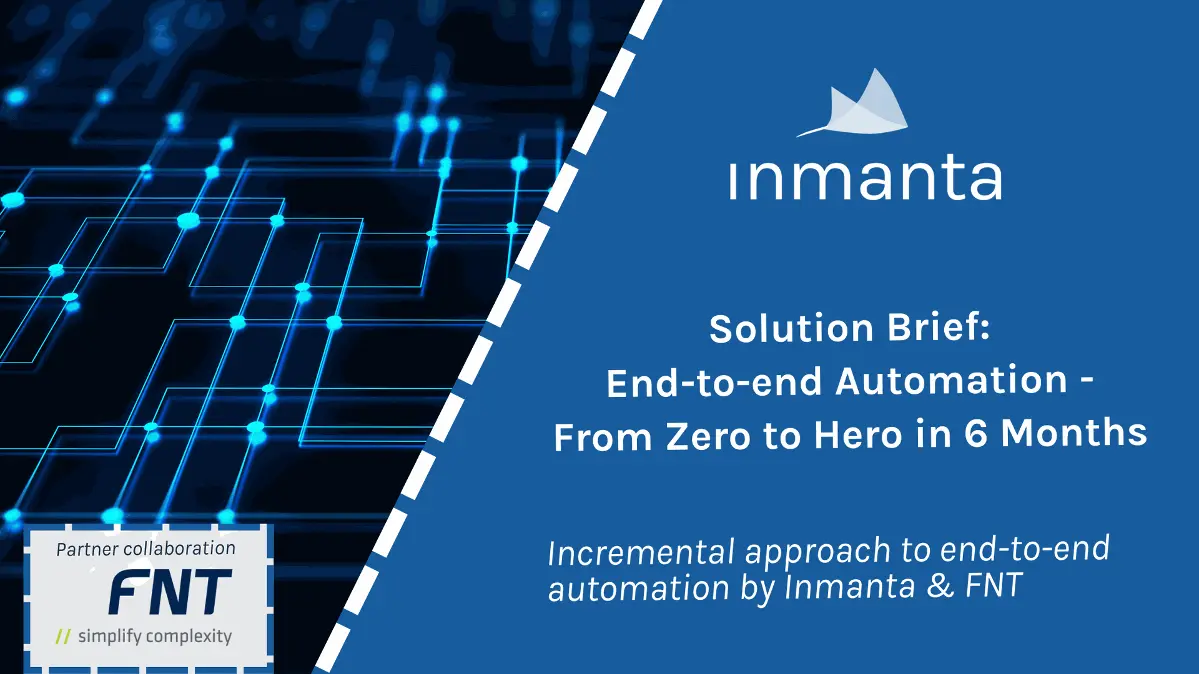The telecom industry is in constant flux. Demand for bandwidth explodes, new technologies like 5G and edge computing emerge, and the complexity of managing networks grows exponentially. In this dynamic landscape, the concept of "autonomous networks" has emerged as a major evolution, promising to revolutionize how we deploy, operate, and experience connectivity. But what exactly are autonomous networks, and why should you care?
Why autonomous networks matter
We're all familiar with automation. It's the process of using technology to perform tasks automatically, reducing manual effort. Autonomous networks take this a giant leap further. Think of it like the difference between cruise control and a self-driving car. While cruise control automates speed, a self-driving car navigates complex environments, adapting to the changing conditions in real time.
Autonomous networks do the same for telecom infrastructure. It's crucial to distinguish between automation and autonomy. Automated networks rely on pre-defined rules and scripts to execute tasks, offering efficiency and consistency. Autonomous networks, on the other hand, go beyond this. They leverage intent-based orchestration and artificial intelligence (AI) and machine learning (ML) to learn, adapt, and make decisions. This means they can proactively detect and resolve issues, optimize performance based on changing conditions, and even anticipate future needs. Instead of relying on human intervention for every configuration change, troubleshooting step, or optimization task, autonomous networks leverage AI, machine learning, and advanced analytics to:
- Self-Configure: Automatically provision and configure network resources based intent.
- Self-Heal: Proactively identify and resolve network issues, minimizing downtime and service disruptions.
- Self-Optimize: Continuously analyze network performance and dynamically adjust resources to ensure optimal efficiency and user experience. While automation is reactive, autonomy is proactive and adaptive. In essence, automation is about doing things faster and more consistently, while autonomy is about doing the right things, even in unpredictable situations.
Navigating the maturity levels of network autonomy
The journey towards fully autonomous networks is a gradual one, often described in terms of maturity levels of autonomy. These levels typically range from basic automation (Level 0) to full autonomy (Level 5). Level 0 involves manual operations, while Level 1 introduces basic automation of specific tasks. Level 2 focuses on partial automation with some closed-loop control, and Level 3 introduces conditional autonomy, where the network can make decisions within defined parameters. Level 4 brings high autonomy with increased self-healing and optimization capabilities. Finally, Level 5 represents full autonomy, where the network can operate independently in any situation. Telecom operators are currently navigating this progression with intent-based orchestration and observability playing a crucial role in advancing through these levels. This journey requires a strategic approach, focusing on incremental improvements and continuous learning.
Building autonomous networks with Inmanta
Inmanta's intent-based approach allows you to define the desired state of your network, and our platform automatically configures and manages the underlying infrastructure to achieve that state.
Further enhancing our platform is Inmanta RAI, our next- generation network & service-aware observability solution. It provides enhanced visibility, resilience, and operational efficiency of network services and infrastructures. Inmanta RAI empowers network operations teams by providing real-time analytics, visualization and intelligence to proactively monitor, validate & analyze service performance across complex networks. Together with our orchestration platform, they form a comprehensive solution to manage, automate, and observe your network intelligently.
Leveraging our open APIs and modular architecture, you can seamlessly integrate AI/ML tools and other network components. We help you to implement closed-loop automation, and to move towards higher levels of autonomy.

We also focus on abstracting network heterogeneity, allowing you to manage complex multi-vendor & multi-domain environments with ease. Starting with clearly defined use cases and gradually expanding the scope of automation is a pragmatic approach. By partnering with Inmanta, you can embark on your journey towards autonomous networks with confidence.
Embracing autonomous networks
Autonomous networks are not just a futuristic vision; they are already here and the future of telecom. They are essential for enabling the next generation of connectivity services. By embracing autonomous networks, telecom operators can unlock new levels of efficiency, agility, and reliability, paving the way for a smarter, more connected world. While fully autonomous networks are still evolving, the journey has begun. Telecom operators are gradually implementing automation and AI-driven solutions to achieve higher levels of network autonomy. This requires investing in intent-based orchestration and observability solutions, like Inmanta, to lay the foundation for closed-loop automation of connectivity services.
Ready for practical change in your journey to high autonomy networks? Get your free copy of 'Bridging the Network Autonomy Chasm' and learn more on how intent-based orchestration can bridge the critical gap between Level 3 and Level 4.

